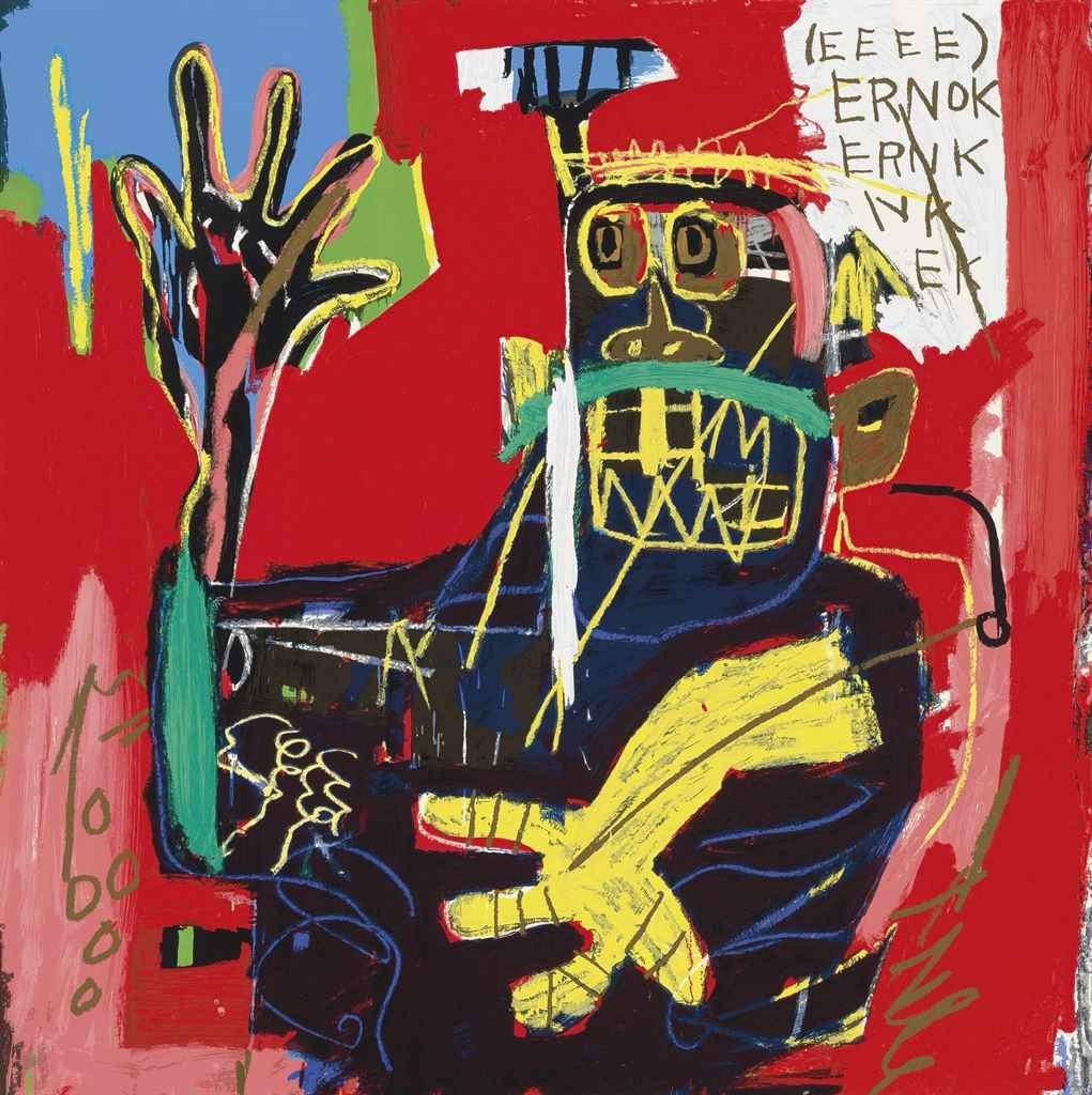
Ernok

Ernok
Unsigned Print
Jean-Michel Basquiat
£60,000-£90,000
$120,000-$180,000 Value Indicator
$110,000-$170,000 Value Indicator
¥570,000-¥850,000 Value Indicator
€70,000-€100,000 Value Indicator
$620,000-$930,000 Value Indicator
¥12,460,000-¥18,690,000 Value Indicator
$80,000-$120,000 Value Indicator
There aren't enough data points on this work for a comprehensive result. Please speak to a specialist by making an enquiry.
102 x 102cm, Edition of 85, Screenprint
Auction Results

Track auction value trend
Meaning & Analysis
Ernok is a screen print in colours from 2001 by Jean-Michel Basquiat. This print features a black subject painted in close-up surrounded by frenzied brushstrokes of red, blue and green. Much like in Head, there is the sense that we can see beneath the subject’s skin, with yellow lines indicating the skull and areas of red paint penetrating through the body, indicating veins and internal organs. The blue lines across the figure’s chest loosely depict a ribcage.
The letters of the name ‘Ernok’ are broken down in the top right of the print, redolent of graffiti duo SAMO’s orthographical experimentation on the walls of New York City. Moreover, the breaking down of the name evokes the way in which Basquiat broke down the SAMO name to a single S, often accompanied by a crown, in his later works.
The incompleteness of the body in Ernok recalls bell hooks’ comment that much of Basquiat’s work evokes a fear of violence and oppression: “They speak of dread, of terror, of being torn apart, ravished. Commodified, appropriated, made to “serve” the interests of white masters, the black body as Basquiat shows it is incomplete, not fulfilled, never a full image”.